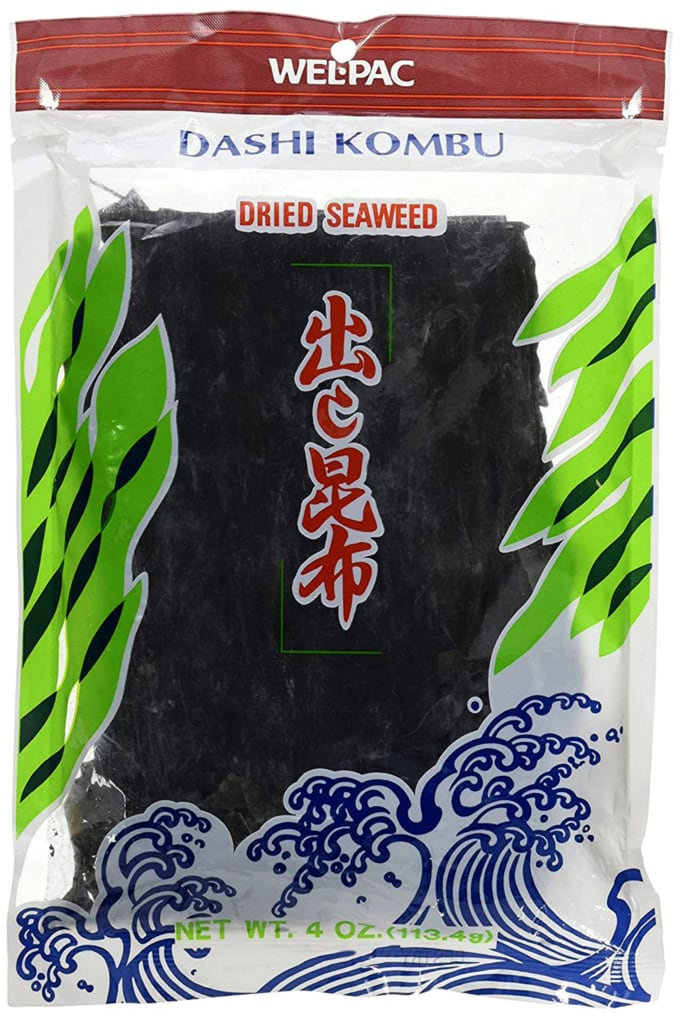This edible kelp, typically cultivated in Hokkaido in the north of Japan, is a key ingredient in making dashi – but has many uses and preparations. It is typically sold dry, but may be used fresh along with sashimi or pickled in vinegar.

What is Kelp?
Kelp is a large brown seaweed that grows in “underwater forests” in shallow oceans.
One of the many species found around the world is kombu, an edible kelp mainly harvested in Hokkaido, an island in the north of Japan. It is also cultivated in Korea, where it is known as dasima, and in China (haidai).
Kelp VS Seaweed
Seaweed is a general term that includes many types of marine-based plants and algae. Seaweed can grow in different environments such as lakes, rivers and oceans and it presents itself in three colors – red, brown and green.
Although it can vary in color, sea kelp is considered a brown seaweed and only breeds in saltwater along rocky coastlines. It is always quite big, whereas seaweed comes in a wide range of sizes.
What is Kelp Used For?
Glutamic acid is an amino acid responsible for umami – the “fifth-taste” – and kombu has it in spades.
Kombu is a key ingredient in making dashi, an essential stock in Japanese cooking, its best known use being miso soup. Added to beans during cooking, kombu makes them more digestible – and thus reduces flatulence! It is also used to prepare a seasoning for rice and salads, or can be eaten fresh in sashimi.
Infusing kombu in hot water creates a tea rich in glutamine, called kobucha or konbucha in Japan – not to be mistaken with the fermented drink called kombucha in America.

Where to Buy Kelp
Kombu is typically sold dried (dashi kombu) or as a dried shred (oboro kombu, tororo konbu or shiraga konbu). It can also be found pickled in vinegar (su kombu).
You can buy Kombu in Asian or Japanese grocery stores, health food stores and sometimes in the Asian food section of regular supermarkets. First year kombu comprises much of what makes it to the market to be consumed, and has a thinner consistency and lighter taste.
Ma-Kombu (meaning “real kombu”) is thicker after having been given a second year to grow and is thicker with a more rounded depth of flavor.
You will often see a dusting of white powder on dried kelp.
You can simply wipe it with a damp cloth before cooking – a full rinse is not recommended as it would eliminate the glutamic acid. Store it in a well-sealed container away from sunlight and moisture.
How to Eat and Cook Kombu (Kelp)
Kombu is such a versatile ingredient to cook with that it can be found in many different forms. Kombu can be used as a soup based (dashi), it can be pickled, thrown into stir fries, served as otsumami (おつまみ) which are Japanese snacks that pair well with alcoholic drinks, used in salads, even made into candy!
The first thing you should do when cooking with kombu is to remove some of the white dusting as some pieces can still have dirt on them. But you don’t want to remove too much because the white dusting (which is 100% natural) is where all the umami-rich flavors are. Simply use a damp paper towel or cloth and gently wipe the kombu.
- To make dashi or stock: Place the kombu in a pot of water and let it soak for 10 minutes, up to 3 hours. The longer you leave the kombu soaking in water and the more infused the dashi or stock will be. Turn the heat on and bring the water to a boil. When the water starts to boil, remove the kombu. The reason why you should never boil kombu for a long time when making dashi or stock is because kombu will make it slimy. Always remove it as soon as the water starts to boil.
- To eat as a snack or side dish: Place the kombu in a pot of water – it doesn’t matter if the water is hot or cold – and let is soak for 20 minutes, up to 3 hours. The kombu will soften and you will be able to slice it and then cook with it. If you would like the kombu to get very tender, place it in a pot of water and bring it to a boil. Continue boiling for 45-60 minutes and drain.
Kombu Expands A Lot
When cooking with kombu, it’s important to know that kombu expands quite a bit – it can double or triple its size – when left to rehydrate in warm or hot water. Always keep that in mind when you are cooking with it since you may end up with too much, especially if you are planning to use it in a dish, as opposed to making a soup stock.
Recipes using kelp/kombu:
First year kombu comprises much of what makes it to the market to be consumed, and has a thinner consistency and lighter taste. Ma-Kombu (meaning ‘real kombu’) is thicker after having been given a second year to grow and is thicker with a more rounded depth of flavor.














